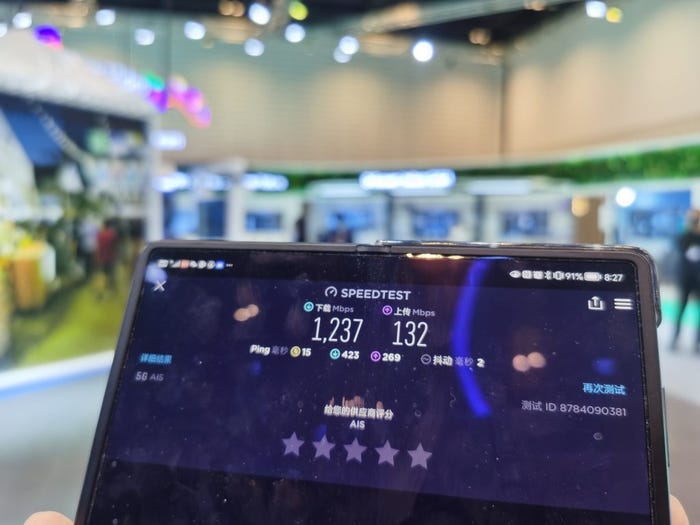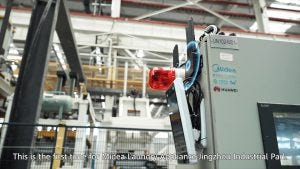Digitalization is the First Choice for Indoor 5G NetworksDigitalization is the First Choice for Indoor 5G Networks
November 21, 2022

Sponsored Content
5G’s rich capabilities mean it must be built out in a way that suits both the demands of the environment and the needs of the users.
A one size fits all approach does not apply. This is where Huawei’s innovative LampSite range of indoor wireless equipment comes in.
As the name suggests, it specializes in indoor cellsite scenarios, from train stations and airports for mass market consumers to advanced industrial use cases.
Eric Bao, President of Huawei’s Wireless Digital Indoor System Product Line, said the business unit aims “to provide the ultimate experience and capacity improvement for indoor scenarios.”
This means supporting the different use cases and different priorities for 5G consumer and enterprise deployments.
For the consumer, the priority is eMBB, where 5G needs to deliver the high uplink and downlink experience.
For enterprise it means powering several types of functionality including URLLC, with latency as low as 20ms, mMTC to support a huge population of connections, and location and positioning functionality.
It also must satisfy the business requirements of telecom operators.
“They are heavy asset companies, and they hope that the fixed assets they invest in can be used in the coming five to ten years,” Eric said.
The LampSite products can support three frequencies in one module, ensuring greater higher bandwidth and capacity.
It is boosted by Huawei’s industry-leading innovations, such as its Distributed Massive MIMO that provides up to 4x gain in capacity compared to traditional 4T4R RF modules and eliminates interference between sites.

Speed Test At Queen Sirikit National Convention Center, Bangkok, Thailand
Eric said the biggest difference between 4G and 5G is ability to deliver ubiquitous gigabit experience.
“With these key technologies we are able to provide ultimate gigabit experience and make it accessible anywhere,” he said.
This means being able to deliver reliable and high-speed 5G service to mass market users, generating greater revenue for operators by driving network usage and engagement.
In enterprise, Eric cited verticals such as manufacturing, ports, mining, and power generation.
Each has its own requirements. For example, electricity utilities need to establish wide area connections to support their smart power grid, and in doing this must deploy indoor solutions as well as outdoor equipment.
In the case of manufacturers, they want to build end-to-end smart factories – up to 1000 square metres in area – with 5G powering every step along the way.
They also want production lines that can be flexibly deployed, 1Gbps uplinks to support their video platforms and precise positioning services to operate AGVs (automated guided vehicles).
Eric cites the case of a fully-connected factory in Jingzhou, Hubei province, owned by Midea, one of China’s biggest electrical appliance-makers.
Huawei worked with Midea and China Mobile to build a 5G private network that connects the materials management, production line, AI inspection and the operation of forklifts and AGVs.
The deployment has achieved some impressive numbers that show Midea has “fully realized benefits of 5G in the manufacturing sector,” Eric said.
The factory is now producing one washing machine every 15 seconds with a first-pass yield of 80%, resulting in a 50% cut in inventory and a 30% saving on labour cost.
“As their first fully-connected 5G factory, Midea may replicate this in other factories and regions,” he said.

Jingzhou Fully-Connected 5G Smart Factory Of Midea Group
He added: “Digitalization is the first choice for indoor network construction in the 5G era. It not only provides ubiquitous gigabit experience and diversified to-B capabilities, but also lays a solid foundation for continuous evolution in the future.”
This content is sponsored by Huawei.
Read more about:
Vendor SpotlightsAbout the Author
You May Also Like










.png?width=300&auto=webp&quality=80&disable=upscale)


_1.jpg?width=300&auto=webp&quality=80&disable=upscale)